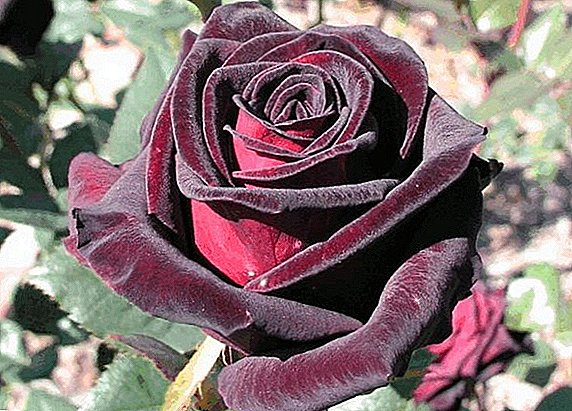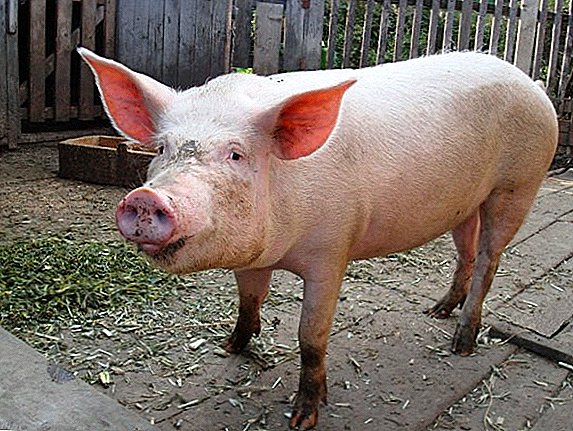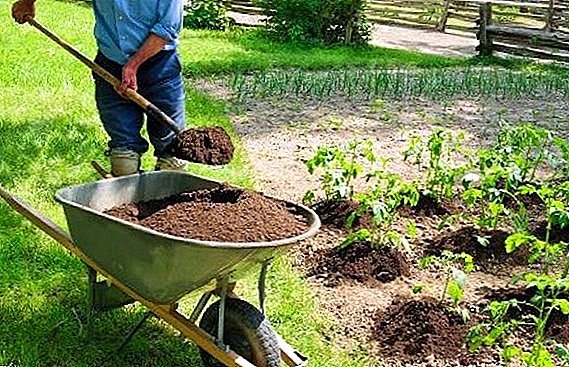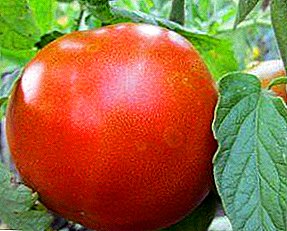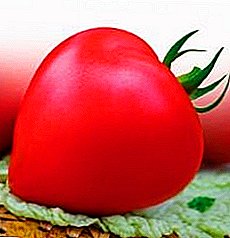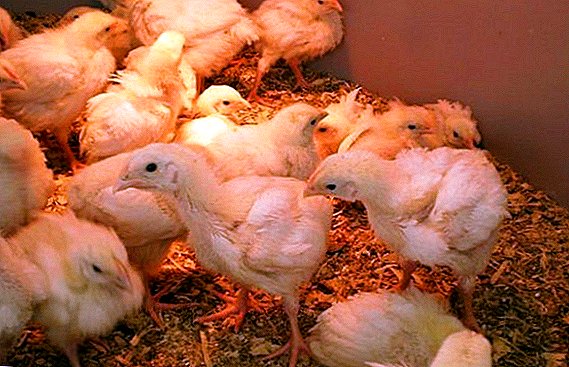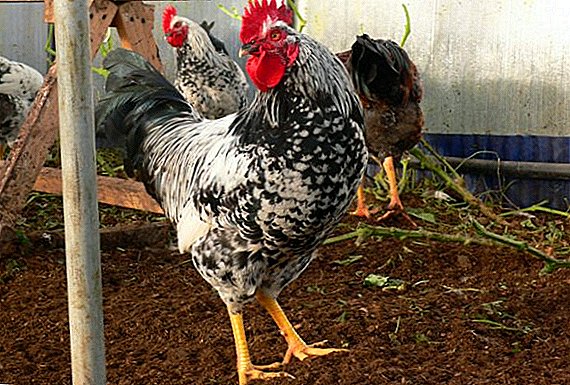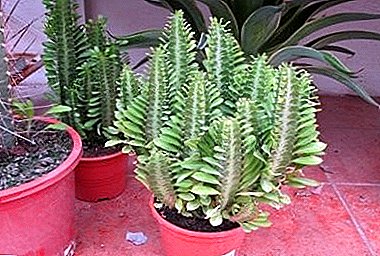
Euphorbia triangular - dangerous plant, to acquire that decide only the most courageous growers.
"Inviting" him to your home, it is important to find a good place for him and to adjust to caring for the prickly "handsome."
Florists will appreciate that this exotic succulent not picky and adapts well to room conditions. The requirements of the plant a little, and they are easy to understand.
Characteristic and description
Euphorbia triangular, trihedral or euphorbia trigon, and in Latin Euphorbia trigona are all the names of one of the brightest representatives of the succulents of the Euphorbia family.
it large plant with a thick and fleshy stem, distinguished by three faces and distinct ribs with small spines. On the tops of the stems grow small oblong leaves. This spurge often confused with cactusto which he has nothing to do.
 The homeland of exotic succulent is an island Madagascar and subtropics of Africa, where it grows in the form of high strange trees on dry elevations.
The homeland of exotic succulent is an island Madagascar and subtropics of Africa, where it grows in the form of high strange trees on dry elevations.
Is it possible to keep euphorbia triangular at home?
Under room conditions, euphorbia is also not shy to grow, reaching 3 meters in height or even more if the height of the ceiling allows.
Euphorbia triangular well branched, over time, overgrown with numerous shoots.
In the prime of his years, having reached an impressive size, he resembles an unprecedented candelabrum with green trihedral candles. There is also an interesting variety with a reddish stem and dark crimson leaves, but it is a rarity in flower collections.
Cultivated as a room flower, euphorbia triangular does not bloom, but attracts florists extraordinary decorative. Rarely what office does without the exotic beauty of this plant. After all, it is unpretentious and is long-lived, retaining its impressive appearance for many, many years.
Such species of Euphorbia are very popular in home cultivation: Multifloric, Fringed, Cypress, Tirukalli, Ribbed, Pallas, Belozhilkovy, Mil.
A photo
Next, you can see the euphorbia triangular in the photo and familiarize yourself with the features of home care: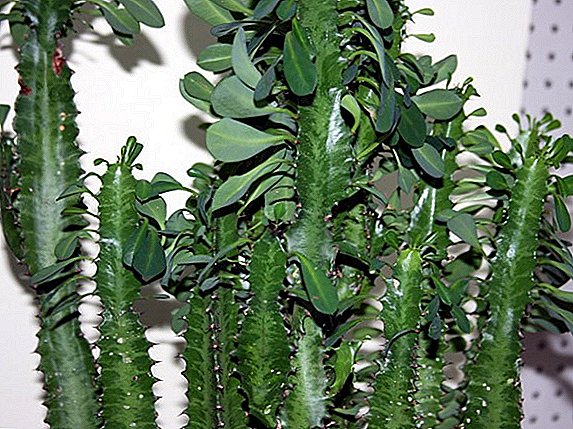


Home care
Triangular euphorbia is just a gift for plant lovers, especially beginners. He is able to put up with any conditions of detention (within reasonable limits!).
Plant tolerates low light, meager and rare watering and even the location next to the heating devices. However, if euphorbia provide the best conditions, it will grow much faster, develop more actively and be able to show itself in all its glory.
The most important point - like the whole family of milkweed, euphoric trigon poisonous. Her "Milk" causes severe poisoning. Therefore, care for the succulent should be careful gloved hands.
The choice of location and temperature
Care at home begins with the choice of location. Euphorbia trigona grows well both in partial shade and in the sun. She will do any place in the house. The plant feels great and in a modest corner, and on the sunny windowsill.
Also, he will enjoy living on a loggia, in a winter garden or greenhouse. However, spurge must be accustomed to direct sunlight. gradually. Otherwise, on his leaves and shoots there will be burns.
From spring to autumn, succulent feels great at normal room temperature. In winter, the most favorable conditions for the plant - easy cool with temperature from 15 to 18 ° C.
Watering and moisture
 In the period of active growth in the spring and summer, the plant needs regular watering.
In the period of active growth in the spring and summer, the plant needs regular watering.
The optimum schedule - moistening of the earth approximately once in 7-8 days.
Undesirable prevent overdrying of earthy coma.
Winter watering shrinking, and in conditions of cool content is carried out as rarely as possible.
It is important to know that the euphoria of the trigon, like all euphorbia, will easily survive a temporary drought, but can not stand the overmoistening of the soil. Stagnant water in the soil can lead to rotting of its roots.
To air humidity euphorbia trihedral not demanding.
Nevertheless, he adores spraying and bathing in the shower.
This gives succulent vitality, it becomes well-groomed and even more spectacular.
During such bathing it is necessary to cover the soil in a pot with plastic wrap. The "cosmetic" procedure, such as cleaning the stems from dust with a brush, will not interfere with the plant.
Soil and transplant
Euphorbia needs a loose, breathable and well drained soil. You can use the purchased mixture for succulents, or you can make it yourself by mixing equal amounts of peat, sand, leaf and turf soil and brick chips for drainage.
Young euphorbia recommended repot annuallyand adult plants every two or three years, as the roots take over the entire space of the pot. Between transplants, it is advisable to change the top layer of soil in the pot every spring.
Transplant is best done in the spring.
 New capacity is selected by the size of the plant.
New capacity is selected by the size of the plant.
It should be voluminous, but not very deep, because the succulent has a superficial root system.
For large copies at the bottom of the pot should put weighty pebbles - it gives them stability.
Thick drainage layer at the bottom of the pot - perhaps the most important condition that euphorbia triangular imposes during transplantation.
After purchase, it is desirable inspect spurge for pestsYou can also wash it with warm water under the shower. Then you need to give him a week or two to adaptby placing it separately from other plants. Then you can gently transfer the succulent to a new pot, if possible, clearing the root system of the old earth.
Fertilizer
Plant nutrition is carried out from spring to autumn. Ideal special fertilizer for succulents, which includes a complete set of essential trace elements.
Pruning
 Many flower growers do not limit their pet in growth, and he, feeling freedom, blows out to unimaginable sizes, becoming an exquisite decoration of the house.
Many flower growers do not limit their pet in growth, and he, feeling freedom, blows out to unimaginable sizes, becoming an exquisite decoration of the house.
How to prune spurge triangular?
If the size of the apartment does not allow to grow a high copy, you can trim it when it reaches the desired height.
To do this, simply cut off the tops of the shoots with a sharp knife and powdered cuts with crushed coal. Trimming milkweed triangular stimulates the formation of new shootsthat gives euphorbia slightly different shape.
He becomes bushy and more "well-fed."
Breeding
How to multiply euphorbia triangular (triangular)? Breeding perform side shoots.
The most favorable time for this procedure - Spring. It is necessary to cut off the young processes about 10 cm long, dry them within 2-3 days and then sprinkle them with crushed coal.
Next, the shoots are planted in moistened sand or perlite and placed on a light, but slightly pritenenny place. After the young euphorbia takes root, gets stronger and moves into growth, you can transplant it into a permanent pot.
Diseases and pests
Plant rarely attacked by pests. Poisonous juice flowing through its "veins" frightens away uninvited guests.
But the most daring of them sometimes attack a plant - this aphid (small green insect), a red spider mite, weaving on the leaves of the web, and a mealybug, leaving a white coating on the shoots. Should examine more often succulent and with the appearance of pests apply insecticides or folk methods.
If the euphorbia is provided with proper care, it practically not sick. However, under inappropriate conditions of detention the following problems may arise:

- With an excess of moisture in the soil, the plant sheds leaves;
- In the absence of dressings or, on the contrary, their overabundance at the plant leaves turn yellow;
- Sometimes ugly brown growths can be seen on its stems. This means that the spurge for too long was under the direct rays of the sun.
However all this easily fixable. It is only necessary to establish the correct care - and the plant will quickly recover, again delighting the grower with a healthy and "flowering" view.
Benefit and harm
Can I keep at home?
As stated above, the plant has one drawback - its milky the juice is poisonous. But besides this, euphorbia triangular carries enormous benefits. After all, this succulent cleans the air in the house and kills harmful bacteria.
It does not follow only keep spurting in the bedroom because of its barely perceptible aroma, from which the dream becomes disturbing and short.
Many place the succulent near the computer to absorb electromagnetic radiation, confusing it with a cactus. And yet it is a good place for a plant. It will not protect against the harmful effects of technology, but it will set up its impressive appearance in the working mode.
In ancient times, healers attributed euphorbia miraculous properties. With the help of the sap, the plants used to get rid of warts, corns, herpes and parasites, were treated for various diseases.
In India, powdered from its crushed root healed wounds from snakebites. When collecting milkweed juice, healers wrapped the face with a thick cloth so that even the smallest droplets did not get on the skin and in the respiratory tract.
but modern medicine warns patients from such treatment. It is very likely the opposite result - severe poisoning. You should be especially careful when caring for the plant, making sure that its juice does not fall on the skin and eyes.
 At hit of juice of euphorbia a burning sensation is felt on the skin, irritation, redness and even blisters appear.
At hit of juice of euphorbia a burning sensation is felt on the skin, irritation, redness and even blisters appear.
The affected place begins to hurt and itch. It is necessary to thoroughly rinse it under running water and smear it with an ointment containing glucocorticoids.
To reduce pain, you can apply prednisolone or hydrocortisone ointment.
If the juice accidentally hit the tongue, it starts to go numb, and this process can capture the entire face. With the contact of "milk" with the wound may appear long non-healing ulcer. Juice ingestion causes nausea, vomiting, diarrhea and severe stomach poisoning.
Cardiovascular failure may even develop. Very serious consequences arise when juice falls on the mucous membrane of the eyes - a person may even lose his sight.
If something happened from the above, depending on the situation, you should immediately flush your eyes, rinse your mouth or clear your stomach and consult a doctor immediately.
The dangerous properties of euphorbia trigons prevent some flower growers from acquiring it. However, this plant may be completely harmless, if you care to follow the following measures:
- Wear gloves when transplanting, trimming and other operations;
- wash hands thoroughly with soap and water;
- place the succulent in places not accessible to small children and animals.
As you can see, the euphorbia triangular though dangerous, but amenable to "taming". If you place it in the right place, carefully take care of it and give it regular care, the plant will take pride of place in the house for many years.


